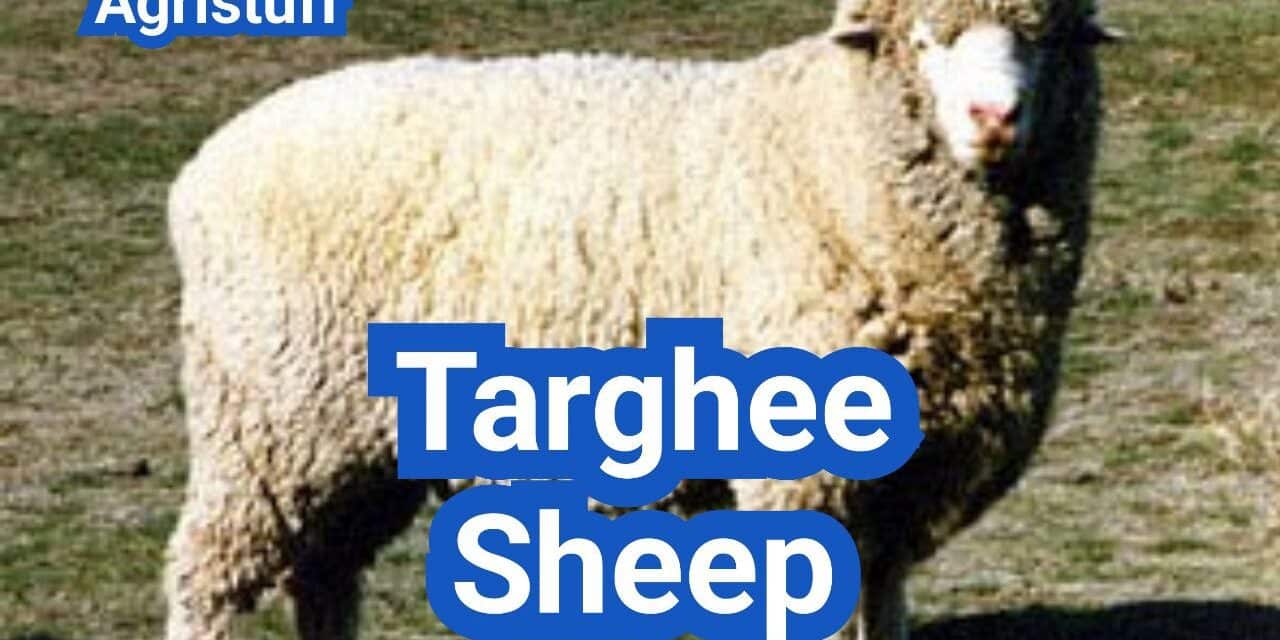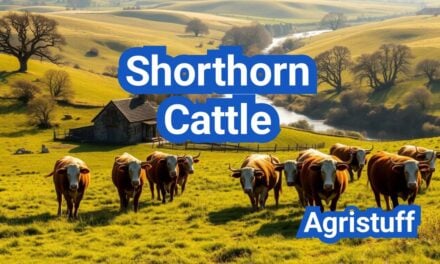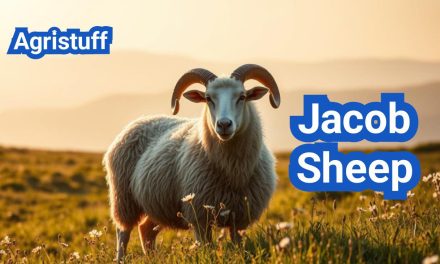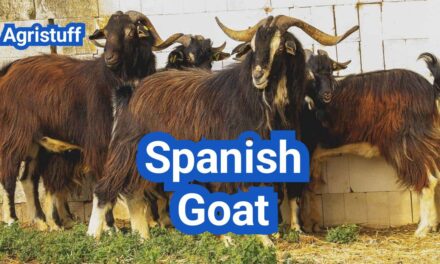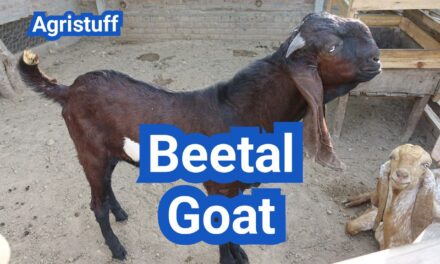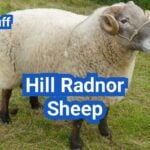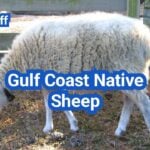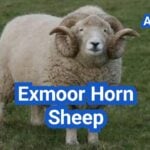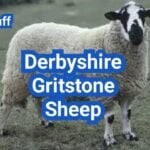The American breed of domestic sheep known as Targhee has a rich history dating back to the early twentieth century. Developed at the U.S. Sheep Experiment Station of the Agricultural Research Service, this breed has been bred for its unique characteristics and multiple uses.
The history and origin of Targhee Sheep are closely tied to the development of the U.S. sheep industry. With a focus on breeding for desirable traits, the Targhee breed has become known for its hardiness and versatility.
Key Takeaways
- Developed in the early twentieth century
- Bred for unique characteristics and multiple uses
- Known for hardiness and versatility
- American breed of domestic sheep
- Rich history tied to the U.S. sheep industry
The Story Behind Targhee Sheep
The story of Targhee sheep is deeply intertwined with the U.S. Sheep Experiment Station in Dubois, Idaho. This breed was developed with a specific purpose in mind: to create a hardy, versatile sheep that could thrive in the challenging environments of the American West.
Origin and Development in Idaho
In 1926, the U.S. Sheep Experiment Station in Dubois, Idaho, began the development of the Targhee breed. The goal was to produce a sheep that could withstand the harsh conditions of the Western ranges while providing high-quality wool and meat. The development process involved careful selection and breeding of existing sheep breeds to achieve the desired traits.
The Idaho location was chosen for its diverse climate and geography, allowing the breeders to test the resilience and adaptability of the new breed under various conditions. The unique combination of rugged terrain and variable weather patterns in Idaho played a crucial role in shaping the characteristics of Targhee sheep.
Naming and Connection to Targhee National Forest
The Targhee breed was named after the nearby Targhee National Forest, reflecting its origins and connection to the region. This naming not only honored the geographical location but also underscored the breed’s adaptability to the forest and mountainous terrains.
- The Targhee National Forest provided a natural backdrop for the breed’s development.
- The name “Targhee” became synonymous with quality and hardiness in sheep breeding.
- The connection to the forest highlighted the breed’s suitability for rugged environments.
The story of Targhee sheep is a testament to the innovative spirit of American sheep breeders and the importance of adapting to local conditions. Today, Targhee sheep continue to be valued for their robustness, versatility, and productivity.
History and Development of the Targhee Breed

The history of Targhee sheep is deeply rooted in the U.S. Sheep Experiment Station’s innovative breeding programs. This breed was developed to address the needs of sheep farmers in the western United States, focusing on hardiness, wool production, and meat quality.
Creation at the U.S. Sheep Experiment Station
The Targhee breed was developed by crossing Rambouillet ewes with Lincoln rams at the U.S. Sheep Experiment Station in Idaho. This strategic breeding aimed to combine the Rambouillet’s hardiness and wool production with the Lincoln’s size and meat quality. The result was a breed well-suited to the range conditions of the western United States.
The U.S. Sheep Experiment Station played a crucial role in the breed’s development, providing the necessary infrastructure and expertise for the complex breeding program. The station’s work laid the foundation for the Targhee breed’s success.
Breed Recognition and Establishment
Following its development, the Targhee breed gained recognition for its unique characteristics and advantages. Breeders and farmers appreciated its hardiness, fertility, and the quality of its wool and meat. As the breed’s popularity grew, so did its establishment in the sheep industry across the United States.
The recognition of the Targhee breed was a significant milestone, marking its transition from an experimental breed to a mainstream sheep breed. This recognition was crucial for the breed’s long-term viability and its adoption by sheep farmers nationwide.
Physical Characteristics of Targhee Sheep
Targhee sheep boast a unique combination of physical traits that contribute to their hardiness and productivity. One of the defining features of this breed is their size and body structure.
Size and Body Structure
Mature Targhee rams typically weigh between 200-300 lbs, while ewes weigh between 125-200 lbs. This size, combined with their sturdy body structure, makes them well-suited for a variety of farming conditions. Their body is well-proportioned, with a deep chest and well-sprung ribs, contributing to their overall strength and resilience.
Facial Features and Appearance
The facial features of Targhee sheep are characterized by a white face, often with a slight openness around the eyes. They have a straight or slightly convex profile, adding to their attractive appearance. Their ears are medium in size and alert, indicating good health and vigor.
Color Variations and Patterns
Targhee sheep are known for their white coloration, although some may have spots or stains, particularly around the face and legs. The fleece is typically white, with a fleece micron measurement ranging from 21-25, indicating a medium wool type. This coloration and wool quality make them desirable for both meat and wool production.
As noted by sheep breeders, “Targhee sheep are renowned for their ability to maintain a high level of productivity while being relatively easy to manage.” This is largely due to their robust physical characteristics, which enable them to thrive in a range of environments.
Key Physical Traits:
- Robust size and body structure
- Attractive facial features with a white face
- White coloration with possible spots or stains
- Fleece micron measurement of 21-25
Understanding Targhee Sheep Wool Properties
Understanding the wool properties of Targhee sheep is crucial for farmers and textile manufacturers alike. The characteristics of their wool play a significant role in determining the breed’s value and utility in various applications.
Wool Type and Classification
Targhee sheep produce a medium-quality wool that is classified based on its fleece characteristics. The wool is known for its softness and durability, making it suitable for a variety of textile products. The fleece is generally white, with some variations in color, and is highly valued for its uniformity.
Fleece Micron and Quality Measurements
The fleece micron measurement of Targhee sheep wool typically ranges from 21 to 25 microns. This measurement is a critical indicator of the wool’s quality and determines its suitability for different textile applications. The quality measurements also include factors such as staple length, strength, and color, all of which contribute to the overall value of the fleece.
Annual Wool Production Expectations
Targhee sheep are known for their respectable annual wool production, with ewes typically producing between 10 to 14 pounds of wool per year. This level of production makes them a viable option for farmers looking to capitalize on the wool market. The annual production can vary based on factors such as nutrition, health, and genetics.
In conclusion, the wool properties of Targhee sheep, including their wool type, fleece micron, and annual production, make them a significant breed in the sheep industry. Their medium-quality wool is highly regarded for its characteristics, making it suitable for a range of applications.
Targhee Sheep as a Dual-Purpose Breed

Targhee sheep are renowned for their versatility in providing both high-quality wool and meat. This dual-purpose capability makes them an attractive choice for farmers looking to diversify their agricultural products.
Wool Production Capabilities
Targhee sheep are known for their excellent wool production. Their fleece is characterized by its softness, fineness, and durability, making it highly sought after in the textile industry.
- Average fleece weight: 8-12 pounds
- Fleece micron: 29-32 microns
- Staple length: 3-4 inches
The breed’s wool production is consistent, making it a reliable choice for farmers who depend on wool as a significant income source.
Meat Quality and Production
In addition to their wool, Targhee sheep are also valued for their meat production. They produce lambs that are well-suited for the meat market, with characteristics that include tender meat and an appropriate growth rate.
| Characteristic | Value |
|---|---|
| Lambing Rate | 120-150% |
| Growth Rate | Average daily gain of 0.5-0.7 pounds |
The breed’s meat quality is enhanced by its genetic background, which has been developed for both hardiness and marketability.
Temperament and Behavior of Targhee Sheep
Known for their hardiness and ease of handling, Targhee sheep exhibit a unique temperament and behavior profile. This profile is a significant factor in their popularity among sheep breeders and farmers.
General Disposition
Targhee sheep are generally known for their calm and docile nature. They are considered to be easy-going and are often described as having a pleasant disposition. This makes them an excellent choice for farmers who are looking for a breed that is not overly aggressive or difficult to manage.
Their calm nature also contributes to their ability to thrive in various environments. Whether on large ranches or smaller farms, Targhee sheep tend to adapt well, showcasing their resilience and flexibility.
Handling Characteristics
Targhee sheep are recognized for their ease of handling, which is a crucial aspect of their temperament. They are generally cooperative during handling procedures such as shearing, vaccinations, and other farm management practices.
Their handling characteristics can be attributed to their calm disposition and the fact that they are not typically skittish or aggressive. This makes them an ideal choice for both experienced breeders and those new to sheep farming.
In summary, the temperament and behavior of Targhee sheep make them a highly desirable breed for a wide range of farming operations. Their calm nature, combined with their hardiness and ease of handling, positions them as a versatile and valuable asset in the sheep industry.
How to Breed Targhee Sheep Successfully
Breeding Targhee sheep requires a thorough understanding of their reproductive cycles and genetic potential. Successful breeding programs involve careful selection and consideration of Expected Progeny Differences (EPDs).
Breeding Season and Cycles
Targhee sheep are known for their ability to breed year-round, but the typical breeding season for many flocks is in the fall. This allows for lambing in the spring when pasture conditions are optimal.
The breeding cycle in ewes is influenced by factors such as nutrition, health, and daylight exposure. Understanding these factors is crucial for optimizing breeding outcomes.
Lambing Rate and Mothering Abilities
Targhee ewes are recognized for their strong mothering abilities and relatively high lambing rates. The average lambing rate can vary depending on factors such as flock management, nutrition, and genetics.
A well-managed Targhee sheep flock can achieve lambing rates of 150% or higher, meaning that for every 100 ewes bred, 150 lambs are born.
| Flock Management | Lambing Rate (%) |
|---|---|
| Well-managed | 150-180 |
| Average | 120-150 |
| Poorly managed | Less than 120 |
Expected Progeny Differences (EPDs)
EPDs are a critical tool in modern sheep breeding, providing a measure of a ram’s genetic potential for various traits. These traits include growth rate, wool production, and reproductive performance.
By selecting rams with favorable EPDs, breeders can make genetic progress in their flock over time. This is particularly important for improving traits such as lambing rate and wool quality.
Using EPDs effectively requires a good understanding of the genetic principles underlying sheep breeding. It also involves careful record-keeping and selection based on objective data.
Setting Up Your Farm for Targhee Sheep: Step-by-Step Guide

Establishing a successful Targhee sheep farm begins with a thorough understanding of the land requirements and infrastructure needs. To ensure the health and productivity of your flock, it’s essential to carefully plan and execute each step of the setup process.
Assessing Land Requirements
The first step in setting up your farm is to assess the land requirements for your Targhee sheep. This involves evaluating the quality and quantity of grazing land, as well as the availability of water. Targhee sheep are known for their hardiness and adaptability, but they still require adequate pasture and water to thrive.
When assessing your land, consider factors such as soil quality, vegetation types, and drainage. It’s also crucial to determine the carrying capacity of your land to avoid overgrazing, which can lead to soil erosion and decreased pasture quality.
Building Appropriate Shelter
Providing adequate shelter is critical for protecting your Targhee sheep from extreme weather conditions and predators. The type of shelter you need will depend on your climate and the size of your flock.
A well-designed shelter should offer protection from wind, rain, and sun exposure. It should also be well-ventilated to prevent respiratory issues. Consider using portable or movable shelters to allow for rotational grazing and to reduce the risk of parasite buildup.
Fencing and Predator Protection
Effective fencing is essential for keeping your Targhee sheep safe and secure. The type of fencing you choose will depend on the terrain, the size of your flock, and the presence of predators in your area.
For predator protection, consider using high-tensile fencing or electric fencing to deter predators such as coyotes, mountain lions, and bears. Fencing should be at least 5 feet tall and made of durable materials that can withstand weather conditions and predator attempts to breach.
In addition to fencing, other predator protection measures may include guard animals, such as dogs or donkeys, and regular monitoring of your flock.
Essential Equipment for Raising Targhee Sheep

Raising Targhee sheep requires careful planning and the right equipment to ensure their health and productivity. The success of a Targhee sheep farm depends significantly on the quality and appropriateness of the equipment used.
Feeding Equipment
Feeding equipment is crucial for the nutrition and health of Targhee sheep. The primary feeding equipment includes:
- Hay feeders: Designed to minimize waste and ensure that the sheep have access to hay.
- Grain troughs: Used for feeding grains and concentrates, these should be durable and easy to clean.
- Watering systems: Automatic watering systems help in maintaining a consistent water supply.
Key Considerations: The equipment should be durable, easy to clean, and designed to minimize feed waste.
Handling and Shearing Tools
Handling and shearing are critical aspects of managing Targhee sheep. Essential tools include:
- Shearing equipment: High-quality shears or shearing machines are necessary for efficient shearing.
- Handling facilities: Crates, chutes, and gates that facilitate safe and efficient handling of the sheep.
- Identification tools: Ear tags, tattoos, or electronic identification devices for tracking individual sheep.
Lambing Supplies
Lambing is a critical period that requires specific supplies to ensure the health of both ewes and lambs. Essential lambing supplies include:
- Lambing pens: Providing a clean and safe environment for ewes to lamb.
- Obstetric equipment: For assisting with difficult births.
- Heating sources: To keep newborn lambs warm, especially in cold climates.
| Supply | Purpose |
|---|---|
| Lambing Pens | Safe lambing environment |
| Obstetric Equipment | Assisting with difficult births |
| Heating Sources | Keeping newborn lambs warm |
In conclusion, the right equipment is fundamental to the successful raising of Targhee sheep. By investing in appropriate feeding, handling, shearing, and lambing equipment, farmers can improve the health and productivity of their flock.
Targhee Sheep Care and Feeding Guide

Understanding the nutritional requirements of Targhee sheep is essential for their overall well-being. These sheep have specific dietary needs that vary by season, and meeting these needs is crucial for their health and productivity.
Nutritional Requirements
Targhee sheep require a balanced diet that includes high-quality forage, adequate energy, and essential nutrients. Their nutritional needs are influenced by factors such as age, size, and stage of production. For instance, lactating ewes have higher nutritional requirements compared to dry ewes or rams.
A diet rich in high-quality forage is fundamental. Forage can include a mix of grasses, legumes, and other vegetation. The quality and quantity of forage should be adjusted according to the sheep’s needs and the availability of pasture.
Seasonal Feeding Adjustments
Seasonal changes significantly impact the nutritional needs and feeding practices for Targhee sheep. During the grazing season, sheep can obtain a significant portion of their nutrition from pasture. However, during the winter months or periods of drought, supplementary feeding becomes necessary.
- Provide high-quality hay during winter or when pasture is scarce.
- Adjust the amount of grain or concentrates based on the sheep’s condition and production stage.
- Ensure access to clean water and mineral supplements year-round.
Water and Mineral Needs
Adequate water intake is crucial for the health of Targhee sheep. Water should be clean, fresh, and readily available at all times. The need for minerals can be met through a combination of free-choice mineral supplements and minerals included in their feed.
| Mineral | Importance | Sources |
|---|---|---|
| Sodium | Essential for fluid balance | Salt blocks or mineral mixes |
| Calcium | Critical for bone development | Legumes, mineral supplements |
| Phosphorus | Important for energy metabolism | Grain, mineral mixes |
By understanding and meeting the nutritional, seasonal feeding, and mineral needs of Targhee sheep, farmers can ensure the health and productivity of their flock.
Health Management for Targhee Sheep
Effective health management is crucial for maintaining the well-being of Targhee sheep. A comprehensive health management plan involves understanding common health issues, implementing effective parasite control strategies, and following a recommended vaccination schedule.
Common Health Issues
Targhee sheep are generally hardy, but like all breeds, they can be susceptible to certain health issues. Common problems include internal parasites, respiratory diseases, and reproductive issues. Regular monitoring and veterinary care are essential to identify and address these issues promptly.
“Internal parasites are a significant challenge in sheep farming,” notes Dr. John Smith, a veterinarian specializing in sheep health. “Regular deworming and pasture management are critical to controlling parasite loads.”
Parasite Control Strategies
Parasite control is a vital component of health management for Targhee sheep. Strategies include:
- Regular deworming using appropriate medications
- Pasture rotation to reduce parasite loads
- Monitoring for signs of parasitism
- Genetic selection for parasite resistance
Implementing these strategies can significantly reduce the impact of parasites on the flock. It’s also important to work with a veterinarian to develop a parasite control program tailored to the specific needs of your farm.
Vaccination Schedule
A well-planned vaccination schedule is crucial for protecting Targhee sheep against diseases. Common vaccinations include those for Clostridium perfringens type C and D, and Clostridium tetani. The specific vaccination schedule may vary depending on the region and the specific risks present on the farm.
Consulting with a veterinarian to develop a vaccination program that meets the needs of your flock is essential. Regular vaccinations, combined with good management practices, can significantly enhance the health and productivity of Targhee sheep.
By focusing on health management, farmers can ensure the long-term sustainability and profitability of their sheep operations. Effective health management practices not only improve the welfare of the animals but also contribute to the overall success of the farm.
Targhee Sheep in the U.S. Sheep Industry

Targhee sheep are an integral part of the U.S. sheep industry, known for their hardiness and productivity. As a dual-purpose breed, they contribute significantly to both the wool and meat production sectors.
Population and Distribution
Targhee sheep are primarily found in the western United States, with significant populations in Montana, Wyoming, and South Dakota. Their distribution across these regions is influenced by factors such as climate, grazing land availability, and market demand for their wool and meat.
The population of Targhee sheep has been relatively stable, thanks to their adaptability and the demand for their products. According to industry reports, Targhee sheep are among the top breeds in the U.S., particularly valued for their ability to thrive in challenging environments.
Economic Impact
The economic impact of Targhee sheep on the U.S. sheep industry is substantial. They are a crucial part of the industry’s structure, providing both wool and meat products that are in high demand.
The table below illustrates the economic contribution of Targhee sheep in terms of wool and meat production:
| Product | Annual Production | Economic Value |
|---|---|---|
| Wool | 500,000 lbs | $1.5 million |
| Meat | 100,000 lbs | $3 million |
| Total | $4.5 million |
As highlighted by industry experts, “Targhee sheep are a cornerstone of the U.S. sheep industry, offering a unique combination of hardiness, productivity, and product quality.” Their contribution to the economy is not limited to direct production; they also support related industries such as textile manufacturing and meat processing.
In conclusion, Targhee sheep play a vital role in the U.S. sheep industry, with their population and distribution contributing to their economic impact. As the industry continues to evolve, the importance of breeds like the Targhee sheep is likely to endure.
The U.S. Targhee Sheep Association

The U.S. Targhee Sheep Association is dedicated to the advancement of Targhee sheep through registry services and membership benefits. As a cornerstone of the Targhee sheep community, the association provides essential services that support breeders and owners.
Membership Benefits and Fees
Membership in the U.S. Targhee Sheep Association offers numerous benefits, including access to a network of experienced breeders, educational resources, and opportunities for promoting your flock. The association offers various membership categories, including:
- Lifetime Membership: A one-time fee that provides lifelong membership benefits.
- Annual Membership: Yearly dues that support the association’s activities and provide member benefits.
- Junior Membership: A discounted rate for young breeders, encouraging the next generation of Targhee sheep enthusiasts.
By becoming a member, you gain access to exclusive events, breed information, and marketing opportunities that can enhance your breeding program.
Registry and Record Keeping
The U.S. Targhee Sheep Association maintains a comprehensive registry for Targhee sheep, ensuring the accuracy and integrity of breed records. The registry process involves:
- Registration of purebred Targhee sheep, verifying their lineage and breed characteristics.
- Record keeping of pedigree information, lambing data, and other relevant breeding details.
- Issuance of certificates of registration, which are essential for breeding and showing your sheep.
Benefits of Registry: Registration with the U.S. Targhee Sheep Association adds value to your sheep by verifying their breed purity and pedigree. This can be particularly important for breeders looking to sell registered stock or participate in breed competitions.
In conclusion, the U.S. Targhee Sheep Association is a vital organization for anyone involved with Targhee sheep, offering a range of benefits that support the breed’s continued success and popularity.
Comparing Targhee Sheep to Other Breeds
The Targhee breed has gained popularity for its hardiness and versatility, but how does it compare to other prominent sheep breeds? To answer this, we’ll examine the characteristics of Targhee sheep in relation to Rambouillet and Columbia breeds, highlighting their differences and advantages.
Targhee vs. Rambouillet
Targhee and Rambouillet sheep are both known for their wool production, but they have distinct differences in their origins, physical characteristics, and productivity. Rambouillet sheep are renowned for their fine wool, while Targhee sheep are recognized for their hardiness and adaptability to range conditions.
| Characteristics | Targhee Sheep | Rambouillet Sheep |
|---|---|---|
| Wool Type | Medium to fine wool | Fine wool |
| Hardiness | Highly adaptable | Less hardy |
| Meat Production | Dual-purpose | Primarily wool |
Targhee vs. Columbia
Columbia sheep are another breed against which Targhee sheep are often compared. Both are considered dual-purpose breeds, providing both wool and meat. However, Targhee sheep are noted for their superior fleece quality and hardiness under range conditions.
- Targhee Sheep: Known for their hardiness and fleece quality.
- Columbia Sheep: Recognized for their size and meat production.
Advantages Over Other Western Range Breeds
Targhee sheep have several advantages over other Western range breeds, including their hardiness, adaptability, and productivity. They are well-suited to the harsh conditions often found in range environments.
In conclusion, Targhee sheep offer a unique combination of hardiness, wool quality, and meat production that makes them an attractive choice for farmers. By comparing them to other breeds like Rambouillet and Columbia, farmers can make informed decisions about which breed best suits their needs.
Raising Targhee Sheep on Small Farms
Raising Targhee sheep on small farms is becoming increasingly popular due to their wool and meat production capabilities. This breed is well-suited for small-scale farming due to its hardiness, versatility, and relatively low maintenance requirements.
Space and Facility Requirements
Targhee sheep require adequate space for grazing and exercise. A general rule of thumb is to provide at least 1/4 acre per sheep for grazing, depending on the quality of the pasture. In addition to grazing space, appropriate shelter and fencing are crucial.
Facility Requirements:
- Adequate shelter to protect from extreme weather conditions
- Sturdy fencing to prevent predation and escape
- Access to clean water and nutritional feed
Economic Considerations
The economic viability of raising Targhee sheep on small farms depends on several factors, including initial investment, ongoing expenses, and potential revenue streams. Initial costs include purchasing the sheep, building or renovating facilities, and equipment.
| Expense Category | Initial Cost | Ongoing Annual Cost |
|---|---|---|
| Purchasing Sheep | $1,000 – $3,000 | $0 (one-time) |
| Facilities and Equipment | $2,000 – $5,000 | $200 – $500 (maintenance) |
| Feed and Veterinary Care | $0 | $500 – $1,000 |
Direct Marketing Opportunities
Small farms can benefit from direct marketing strategies to sell Targhee sheep products, such as wool and meat. Building a customer base through local farmers’ markets, online platforms, and community-supported agriculture (CSA) programs can be effective.
Direct Marketing Strategies:
- Develop an online presence through social media and a farm website
- Participate in local farmers’ markets and agricultural events
- Offer CSA programs or subscription services for wool and meat products
Is the Targhee Sheep Right for You?
Targhee Sheep have proven to be a versatile and valuable breed for farmers and shepherds in the United States. As a dual-purpose breed, they offer both high-quality wool and meat production, making them an attractive option for those looking to diversify their agricultural operations.
When considering whether the Targhee Sheep is right for you, it’s essential to evaluate your farm’s specific conditions, resources, and goals. Factors such as land availability, climate, and market demand should be taken into account. The breed’s hardiness, adaptability, and relatively low maintenance requirements make it an excellent choice for many farming operations.
To make an informed decision, consider the key characteristics and benefits of Targhee Sheep discussed throughout this article. By weighing these factors, you can determine if this breed aligns with your agricultural objectives and is the right fit for your farm.
FAQ
What is the origin of Targhee sheep?
Targhee sheep originated in Idaho, specifically developed at the U.S. Sheep Experiment Station.
What are the physical characteristics of Targhee sheep?
Targhee sheep are known for their medium size, sturdy body structure, white facial features, and predominantly white coat color.
What type of wool do Targhee sheep produce?
Targhee sheep produce medium fine wool, which is highly valued for its quality and quantity.
Are Targhee sheep used for both wool and meat production?
Yes, Targhee sheep are a dual-purpose breed, known for their excellent wool production capabilities and high-quality meat.
What is the temperament of Targhee sheep?
Targhee sheep are generally known for their calm disposition and good handling characteristics.
How do I breed Targhee sheep successfully?
Successful breeding of Targhee sheep involves understanding their breeding season, lambing rates, and using Expected Progeny Differences (EPDs) to make informed breeding decisions.
What are the land requirements for raising Targhee sheep?
The land requirements for Targhee sheep include adequate grazing space and appropriate shelter, with considerations for fencing and predator protection.
What are the nutritional requirements for Targhee sheep?
Targhee sheep require a balanced diet that meets their nutritional needs, with adjustments made seasonally to ensure optimal health and productivity.
How do I manage the health of my Targhee sheep?
Health management for Targhee sheep involves monitoring for common health issues, implementing parasite control strategies, and following a recommended vaccination schedule.
What is the role of the U.S. Targhee Sheep Association?
The U.S. Targhee Sheep Association provides membership benefits, maintains breed registries, and supports breeders in their efforts to promote and improve the Targhee breed.
How do Targhee sheep compare to other breeds like Rambouillet and Columbia?
Targhee sheep have unique advantages compared to other breeds, including their adaptability, wool quality, and meat production capabilities.
Can Targhee sheep be raised on small farms?
Yes, Targhee sheep can be suitable for small farms, offering opportunities for direct marketing and niche production, provided that space and facility requirements are met.
What are the economic considerations for raising Targhee sheep?
Economic considerations include the initial investment in sheep, land preparation, and ongoing costs such as feed, veterinary care, and marketing.
What are the benefits of raising Targhee sheep?
Raising Targhee sheep offers benefits such as high-quality wool and meat production, hardiness, and the potential for direct marketing to consumers.
Conclusion of: Targhee Sheep Breed
Targhee Sheep Introduction: Why This American Breed Matters
Targhee Sheep are a distinctly American, dual-purpose breed valued for both wool and meat, especially in the Western United States. Producers like them because Targhee Sheep combine the hardiness needed for large rangeland systems with the kind of fleece and lamb growth that supports profitable, diversified flocks. As U.S. consumers keep asking for locally raised lamb and the fiber arts market grows, Targhee Sheep offer a practical “two checks from one animal” model. Their balance of maternal ability, range fitness, and medium-fine wool makes them a top choice for ranchers who want adaptable sheep without extreme management needs. South Dakota State University Extension – Sheep Breeds Overview.
Targhee Sheep History and Development at Dubois, Idaho
The story of Targhee Sheep begins at the U.S. Sheep Experiment Station near Dubois, Idaho, where researchers and breeders aimed to create a range-adapted sheep that could still produce heavy, high-quality fleeces and marketable lambs. Starting in 1926, foundation ewes carrying Rambouillet, Lincoln, and Corriedale blood were bred to selected Rambouillet rams, and their offspring were rigorously culled and re-mated to lock in desired traits. Over time, this structured program produced the modern Targhee Sheep type, and the breed’s flock book later closed so that only registered lines could be added. U.S. Targhee Sheep Association – Breed History.
Targhee Sheep Name, Homeland, and Range Adaptation
Targhee Sheep are named after the Targhee National Forest that surrounds the research station where the breed was developed. That geography matters: the Intermountain West is cold, dry, and rugged, with long grazing seasons and big elevation swings. Targhee Sheep were selected to travel, forage, and lamb under these conditions, so they tend to be hardy, sure-footed, and efficient on pasture and native range. This background is why many western ranches still rely on Targhee Sheep for extensive systems and targeted grazing, where animals must convert rough forage into both fleece and lamb without constant inputs. USDA-ARS U.S. Sheep Experiment Station (Dubois, ID).
Targhee Sheep Physical Characteristics and Size
In appearance, Targhee Sheep are white-faced, white-wool sheep that are typically polled (hornless). The breed is medium to large framed, built for strength and longevity rather than showy extremes. Mature Targhee Sheep rams commonly weigh around 200–300 pounds, while ewes often fall in the 125–200-pound range, depending on environment and management. They have open, clean faces, moderate ears, and a balanced body shape that supports both lamb growth and carrying a sizable fleece. Their conformation fits range systems: wide chests, good spring of rib, and sound feet and legs. Oklahoma State University – Breeds of Livestock: Targhee Sheep.
Targhee Sheep Wool Traits: Micron, Staple, and Fleece Weight
Targhee Sheep are strongly respected in the wool market because their fleece is dense, uniform, and pleasantly soft for a range breed. Typical fiber diameter is in the low-to-mid 20-micron range, placing Targhee Sheep in the medium-fine category—soft enough for next-to-skin garments yet durable for daily wear. Ewes often produce fleeces in the 10–14-pound range, with staple lengths commonly about 3–5 inches and good crimp. This combination yields wool that processes well for commercial mills and hand spinners, especially for lofty yarns, sweaters, and blankets. American Sheep Industry Association – Wool Grades Guide.
Targhee Sheep Temperament and Maternal Ability
Beyond fiber and size, Targhee Sheep are known for steady, manageable temperaments and reliable mothering. Because the breed was designed for large western operations, Targhee Sheep generally handle flocking, herding, and range movement calmly, reducing labor stress. Ewes are typically attentive mothers with good milk production for pasture-raised lambs, and they tend to lamb with fewer issues than many heavier meat breeds. This maternal strength is one reason Targhee Sheep remain a favored base ewe in extensive systems and crossbreeding programs aiming to boost lamb survival and weaning weights. USDA-ARS/Peer-Reviewed Review of Targhee Sheep Range Performance.
Targhee Sheep Growth and Meat Qualities
Although Targhee Sheep are famous for wool, they are also a practical meat breed. Lambs grow efficiently on forage with moderate supplementation, producing well-muscled carcasses suitable for U.S. market standards. The breed’s frame provides enough length and depth for good yield without losing range fitness. Many ranchers appreciate that Targhee Sheep lambs finish into desirable weights while maintaining a lean, mild-flavored product that fits both commodity and direct-to-consumer channels. This meat-and-wool balance is what historically separated Targhee Sheep from purely wool or purely terminal meat breeds. University of Wisconsin Extension – Guide to Raising Healthy Sheep.
Targhee Sheep Reproduction, Lambing Rate, and Seasonality
Reproductive performance is another strength of Targhee Sheep. Flocks commonly report high conception and lambing percentages, and twins are frequent in well-managed ewes, especially when nutrition and body condition are kept steady before breeding. Many data sets from NSIP and university work show Targhee Sheep can deliver competitive lamb crops for range breeds, often around 150% or higher under good management, with strong lamb survival. Like most temperate sheep, Targhee Sheep are somewhat seasonal breeders, so producers typically time breeding for spring lambing to match pasture flush and reduce feed costs. American Sheep Industry Association – Maximizing Pounds of Lamb per Ewe.
Targhee Sheep Breeding and Genetic Improvement
Modern Targhee Sheep breeding emphasizes measurable, economically useful traits: weaning and yearling weights, fleece weight, fiber diameter, staple length, and maternal performance. Many seedstock flocks use NSIP Expected Breeding Values/EPDs to select rams and replacements, because visual appraisal alone can miss real genetic differences. For commercial producers, the fastest way to improve a Targhee Sheep flock is to buy rams from performance-recorded lines, then keep the best-doing daughters. Crossbreeding with terminal sires (like Suffolk or Texel) is also common when producers want extra lamb growth while maintaining Targhee Sheep maternal and wool traits. Montana State University Extension – Using EPDs and Selecting Rams.
Targhee Sheep Feeding and Rangeland Nutrition
Targhee Sheep were built for forage, so most systems rely on pasture, native range, and crop aftermath, with supplements targeted to key stages. The most critical window is late gestation and early lactation, when fetal growth and milk demand spike; even hardy Targhee Sheep will lose performance if energy or protein is short. Many western operators use body condition scoring to decide when to add hay, grain, or protein blocks, especially for twin-bearing ewes. Good mineral access is also essential for Targhee Sheep, because range soils can be low in selenium, copper, or iodine depending on region. Penn State Extension – Nutrition Throughout Pregnancy for Sheep.
Targhee Sheep Housing, Shearing, and Handling Basics
Even though Targhee Sheep thrive outdoors, basic infrastructure improves welfare and productivity. Simple windbreaks or three-sided sheds help Targhee Sheep conserve energy during winter storms and provide dry space for newborn lambs. Annual shearing is standard, usually in late winter or early spring, to keep fleeces clean and stimulate wool regrowth before summer range. Routine hoof trimming, clean water points, and low-stress handling chutes reduce lameness and injuries. Because Targhee Sheep are typically docile and flock-oriented, good facilities plus calm movement improve weight gain and ewe-lamb bonding. Utah State University Extension – Working Safely and Handling Sheep.
Targhee Sheep Health Issues and Parasite Control
Like all wool breeds, Targhee Sheep face health risks tied to environment and stocking density. Internal parasites—especially barber-pole worm (Haemonchus contortus)—are a growing concern in many U.S. regions, and Targhee Sheep benefit from preventive grazing plans such as rotation, avoiding overgrazed paddocks, and selective deworming based on FAMACHA scoring. Vaccination programs for clostridial diseases, strict biosecurity with new animals, and fly-strike prevention (through clean hindquarters and timely shearing) help keep Targhee Sheep productive. Because the breed is long-lived, consistent health monitoring pays off over multiple lamb crops. Washington State University Extension – Sheep Parasite Management.
Targhee Sheep Uses: Wool, Meat, and Crossbreeding Value
Producers keep Targhee Sheep for three big reasons. First, their wool sells well into both commercial and artisan channels because it blends softness with durability. Second, Targhee Sheep lambs provide a steady meat income and can be marketed as feeder lambs, finished lambs, or direct-sale freezer lamb. Third, the breed works beautifully in crossbreeding: Targhee Sheep ewes are strong mothers for terminal-sire lambs, and Targhee Sheep rams can add fleece quality and range fitness into other western flocks. For U.S. ranches aiming at local lamb branding or fiber value-adds, Targhee Sheep fit neatly into a diversified income plan. American Lamb Board – U.S. Lamb Industry and Market Resources.
Targhee Sheep in the United States Today
Today, Targhee Sheep remain concentrated in the West—especially Idaho, Montana, Wyoming, and the Dakotas—but they are increasingly found on smaller farms nationwide because of their manageable size, fleece value, and dependable lambing. Research programs still benchmark Targhee Sheep genetics for rangeland efficiency, wool quality, and ewe longevity, keeping the breed relevant as climate, forage patterns, and parasite pressure change. For many operations, Targhee Sheep represent a middle road: not as fine-wooled as Merino, not as heavily muscled as specialized terminal breeds, but balanced enough to stay profitable in real-world pasture systems. USDA-NIFA Project on Rangeland Lamb and Wool Production (Includes Targhee Sheep).
Final thought
Targhee Sheep are a true American success story—bred for western range realities, yet useful far beyond their home region. If you want a flock that can earn from both fleece and lamb, handle variable climates, and thrive mainly on forage, Targhee Sheep are hard to beat. Their history at the U.S. Sheep Experiment Station shaped a breed with practical traits: strong mothers, solid growth, and wool that spinners love. Whether you run thousands of acres of range or a small diversified farm, Targhee Sheep offer a proven, low-drama path to consistent productivity. U.S. Targhee Sheep Association – Breed Resources and Breeders.
Sources & References
- Wikipedia.org/wiki/Targhee_sheep
- Oklahoma State University – Breeds of Livestock: Targhee Sheep
- U.S. Targhee Sheep Association – About & History
- South Dakota State University Extension – Sheep Breeds
- USDA-ARS U.S. Sheep Experiment Station
- American Sheep Industry Association – Wool Grades Guide
- American Sheep Industry Association – Lamb Production Guide
- Montana State University Extension – Genetic & Ram Selection
- Penn State Extension – Ewe Pregnancy Nutrition
- Washington State University Extension – Parasite Management
- American Lamb Board – U.S. Lamb Market Resources

